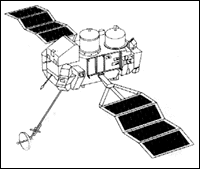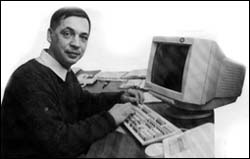Mysterious bursts of gamma rays detected in outer space are caused by the birth of neutron stars that spin at a dizzying 1,000 revolutions per second and have extremely strong magnetic fields, according to Weizmann Institute astrophysicist Vladimir Usov.
Prof. Usov, a member of the Institute Department of Condensed Matter Physics, developed this theory after analyzing vast amounts of information obtained by NASA's orbiting Compton Gamma Ray Observatory. He has recently described his views in the British journals Nature and Monthly Notices of the Royal Astronomical Society.
Most scientists attribute the extraordinary gamma ray bursts to the merger, or death, of neutron stars that results in the creation of black holes. Usov argues that, on the contrary, the bursts take place when neutron stars are born under certain conditions.
He proposes the following scenario: a white dwarf (a hot, dense star giving off white light) that possesses a powerful surface magnetic field draws matter from another, nearby star. When a certain critical mass is reached, the dwarf collapses and forms a fast-rotating neutron star with a magnetic field more than a few million billion times greater than that of the earth.
The spinning of this field produces a strong electric field surrounding the neutron star, which generates a gas known as electron-positron plasma. This plasma flows away from the star at nearly the speed of light, creating a gust of extremely dense, magnetized wind that is detected by satellites as a powerful gamma-ray flash lasting from a fraction of a second to a few minutes.
First observed some 25 years ago, gamma ray bursts are currently detected at the rate of about one per day in galaxies throughout the universe.
According to Prof. Usov, understanding processes involved in the birth of neutron stars not only throws light on the origins of gamma radiation in the universe but may also provide scientists with a unique opportunity to observe and study matter subjected to extreme conditions, such as enormous magnetic fields. "Learning about faraway galaxies on the basis of observations may eventually allow us to turn outer space into a huge lab," Usov says.
Prof. Usov, formerly with the Space Research Institute of the USSR Academy of Sciences in Moscow, joined the Weizmann staff in 1990.

